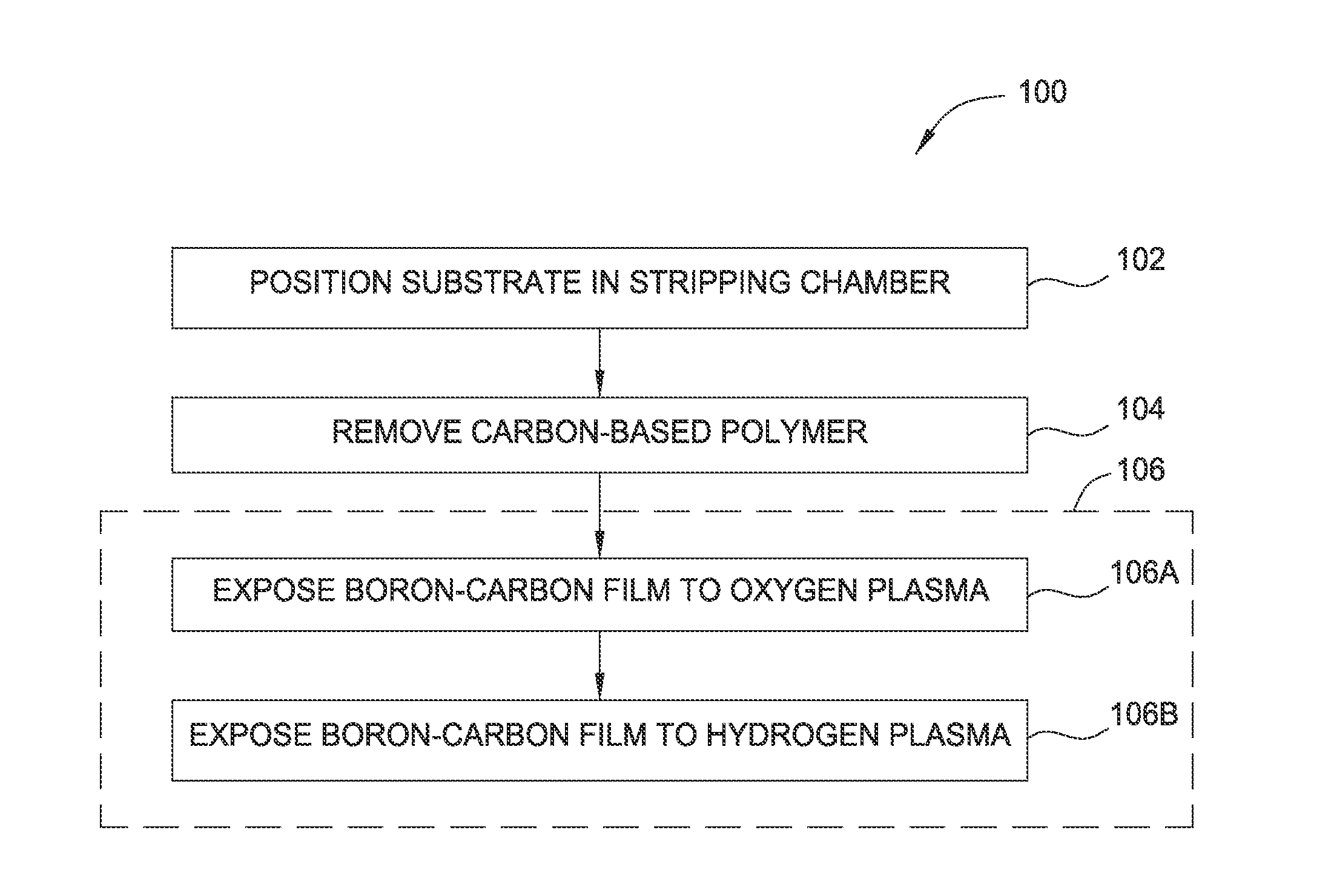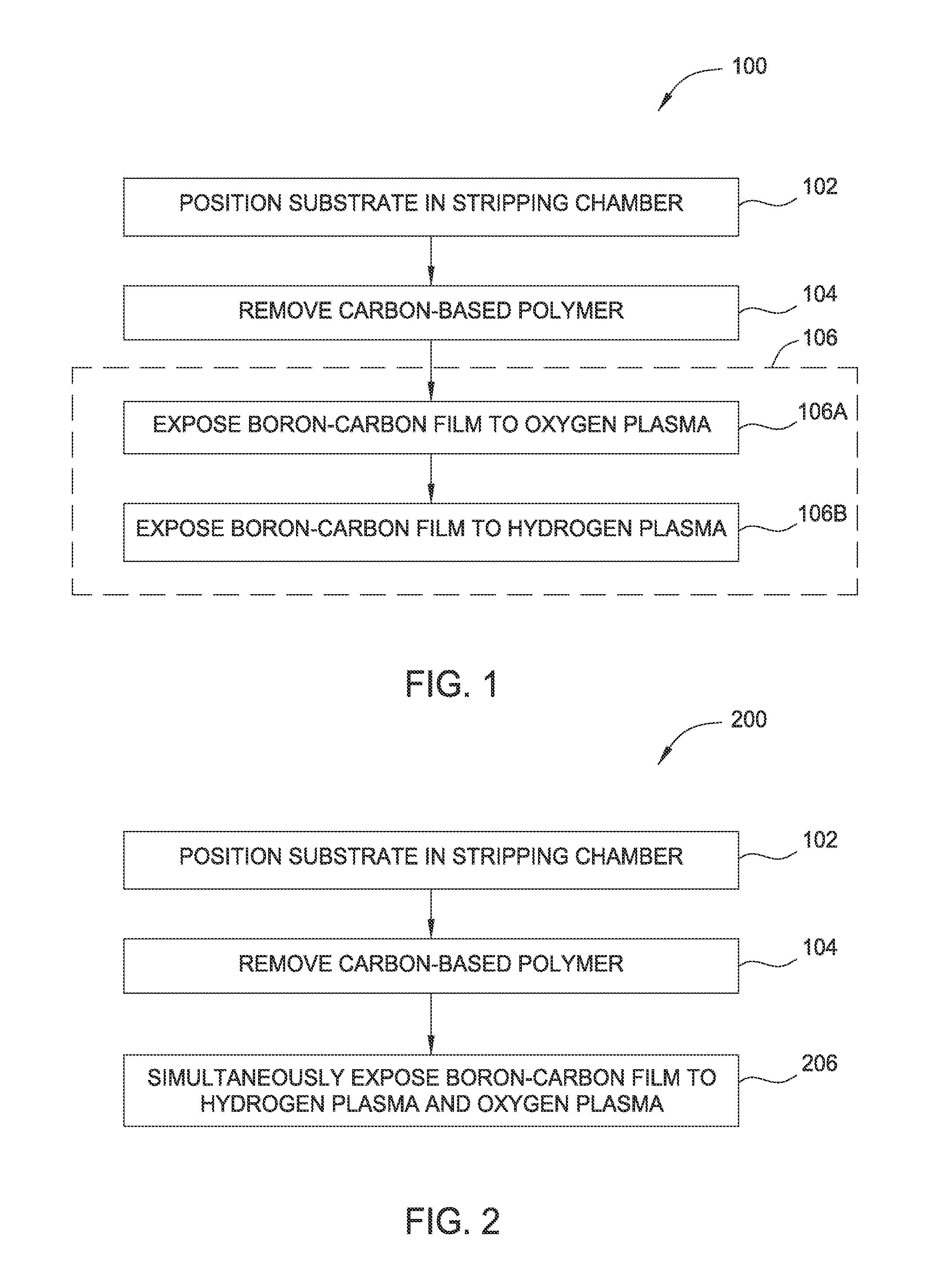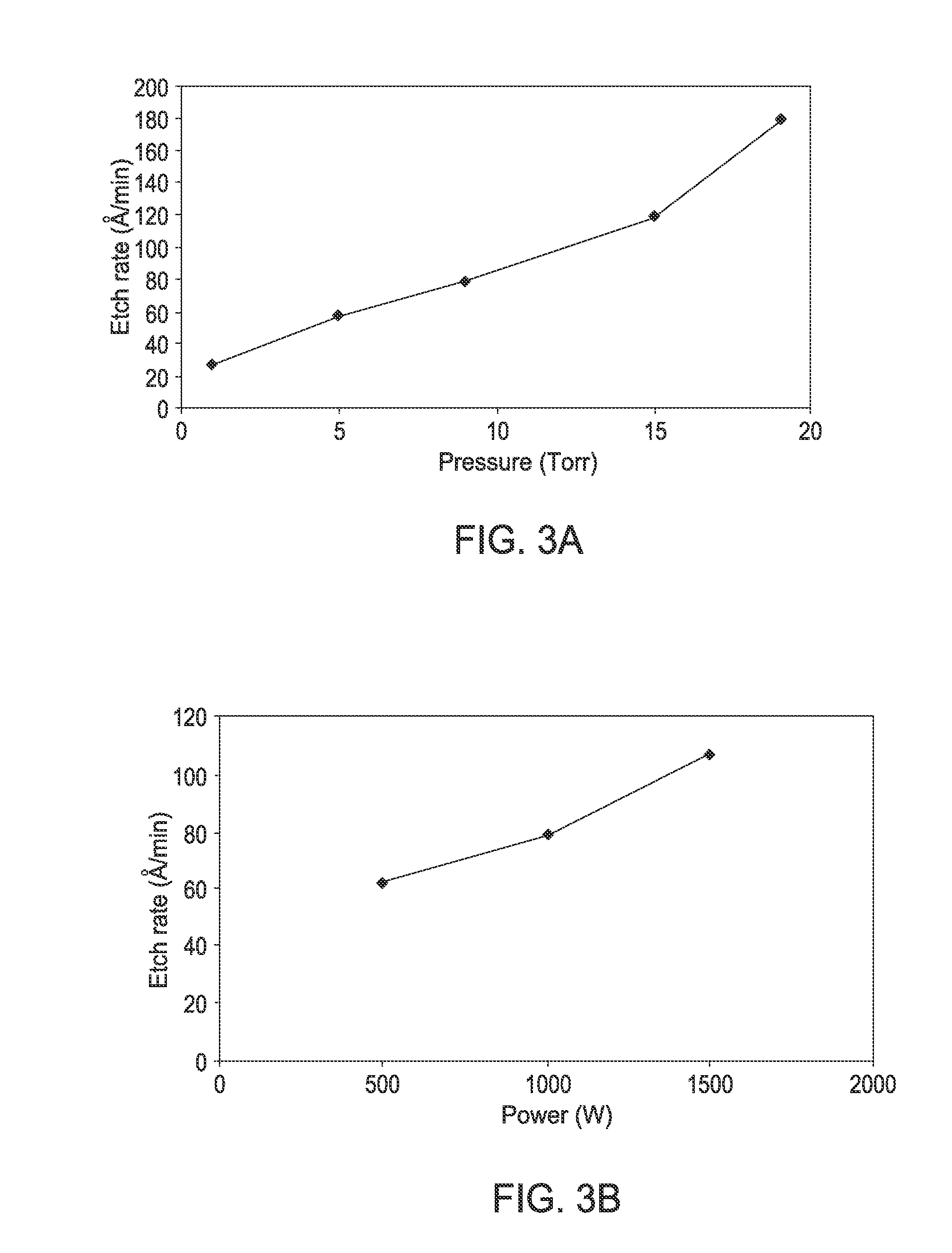Methods of dry stripping boron-carbon films
a technology of boron-carbon films and dry stripping, which is applied in the field of dry stripping boron-carbon films, can solve the problems of corroding dielectric materials with fluorine and chlorine, boron-carbon films are not easily stripped, and wet etch solutions can damage exposed metal surfaces or embedded metals
- Summary
- Abstract
- Description
- Claims
- Application Information
AI Technical Summary
Benefits of technology
Problems solved by technology
Method used
Image
Examples
Embodiment Construction
[0019]Embodiments of the invention generally relate to methods of dry stripping boron-carbon films using oxygen-containing oxidizing agents in combination with hydrogen-containing reducing agents. In one embodiment, alternating plasmas of hydrogen and oxygen are used to remove a boron-carbon film. In another embodiment, co-flowed oxygen and hydrogen plasma is used to remove a boron-carbon containing film. A nitrous oxide plasma may be used in addition to or as an alternative to either of the above oxygen plasmas. In another embodiment, a plasma generated from water vapor is used to remove a boron-carbon film. The boron-carbon removal processes may also include an optional polymer removal process prior to removal of the boron-carbon films. The polymer removal process includes exposing the boron-carbon film to a plasma formed from an oxygen-containing gas, a fluorine-containing gas, or a combination thereof to remove from the surface of the boron-carbon film any carbon-based polymers ...
PUM
| Property | Measurement | Unit |
|---|---|---|
| power | aaaaa | aaaaa |
| temperature | aaaaa | aaaaa |
| pressure | aaaaa | aaaaa |
Abstract
Description
Claims
Application Information
 Login to View More
Login to View More - R&D
- Intellectual Property
- Life Sciences
- Materials
- Tech Scout
- Unparalleled Data Quality
- Higher Quality Content
- 60% Fewer Hallucinations
Browse by: Latest US Patents, China's latest patents, Technical Efficacy Thesaurus, Application Domain, Technology Topic, Popular Technical Reports.
© 2025 PatSnap. All rights reserved.Legal|Privacy policy|Modern Slavery Act Transparency Statement|Sitemap|About US| Contact US: help@patsnap.com



